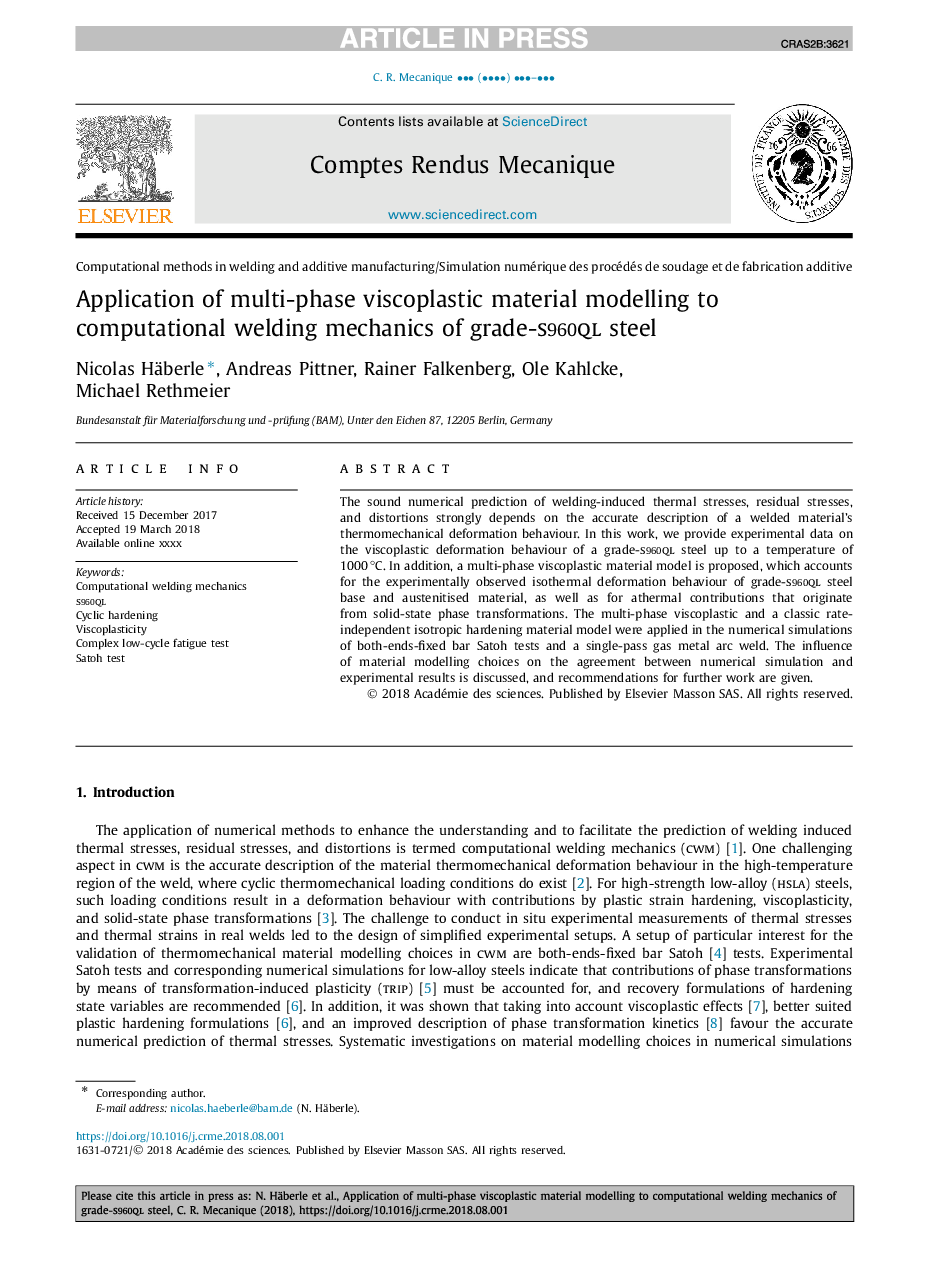| Article ID | Journal | Published Year | Pages | File Type |
|---|---|---|---|---|
| 11007955 | Comptes Rendus Mécanique | 2018 | 15 Pages |
Abstract
The sound numerical prediction of welding-induced thermal stresses, residual stresses, and distortions strongly depends on the accurate description of a welded material's thermomechanical deformation behaviour. In this work, we provide experimental data on the viscoplastic deformation behaviour of a grade-s960ql steel up to a temperature of 1000Câ. In addition, a multi-phase viscoplastic material model is proposed, which accounts for the experimentally observed isothermal deformation behaviour of grade-s960ql steel base and austenitised material, as well as for athermal contributions that originate from solid-state phase transformations. The multi-phase viscoplastic and a classic rate-independent isotropic hardening material model were applied in the numerical simulations of both-ends-fixed bar Satoh tests and a single-pass gas metal arc weld. The influence of material modelling choices on the agreement between numerical simulation and experimental results is discussed, and recommendations for further work are given.
Keywords
Related Topics
Physical Sciences and Engineering
Engineering
Engineering (General)
Authors
Nicolas Häberle, Andreas Pittner, Rainer Falkenberg, Ole Kahlcke, Michael Rethmeier,
